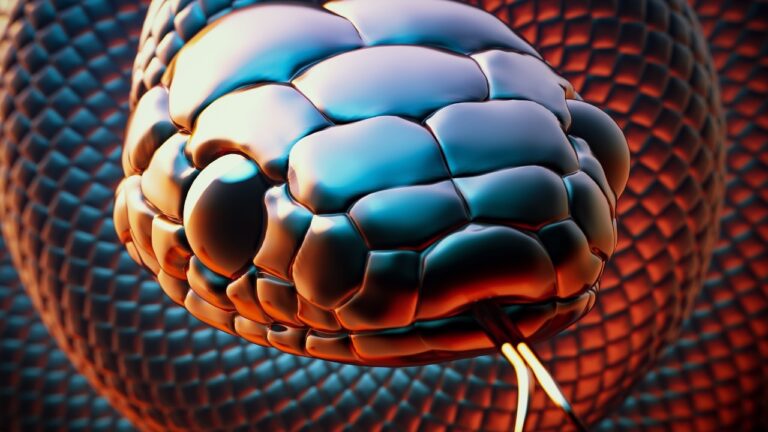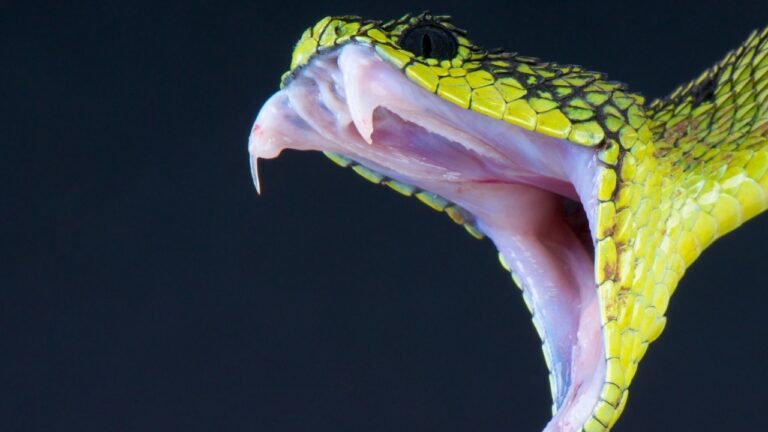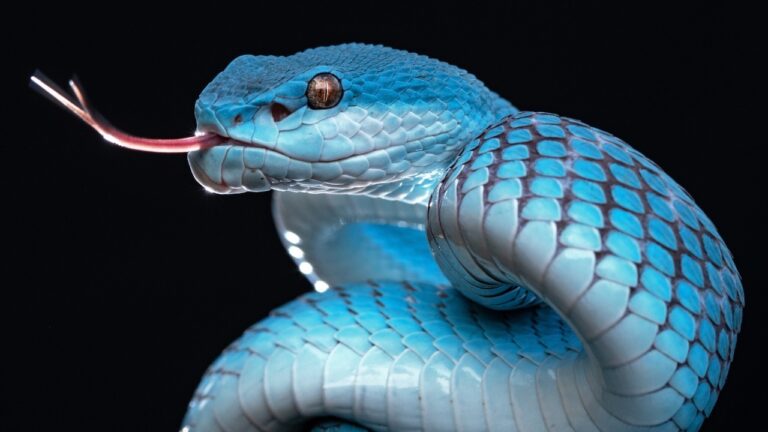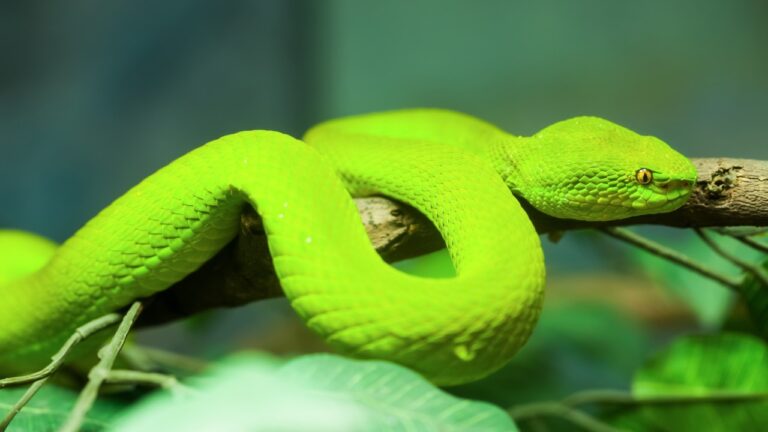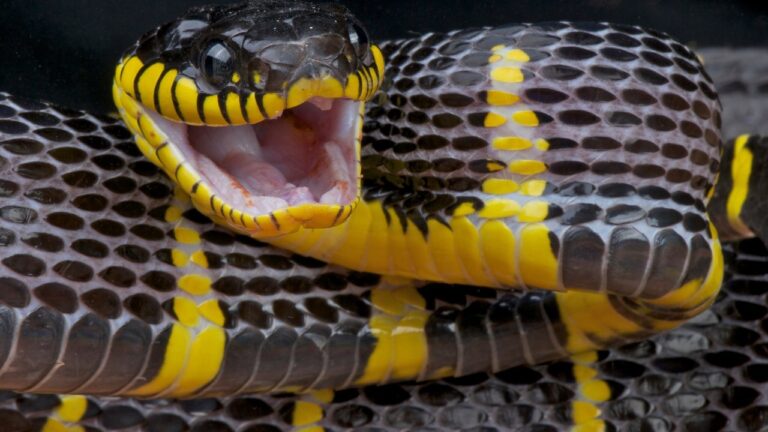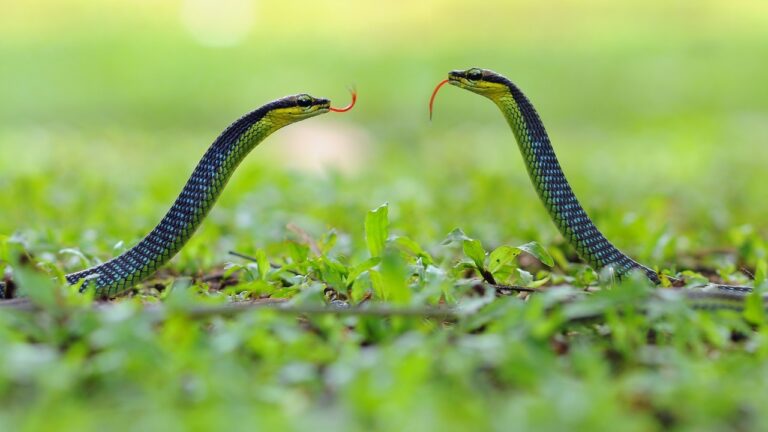Snake Nutrition 101: Essential Diet Tips for Reptile Enthusiasts
When it comes to the health and well-being of our scaly friends, proper nutrition is paramount. Snakes, like any other living beings, rely on a balanced and nutrient-rich diet to thrive. Whether you’re an experienced reptile enthusiast or a newcomer to the world of serpents, understanding the importance of snake nutrition is crucial.
A healthy diet not only ensures that snakes have the energy they need for their daily activities but also promotes optimal growth and immune function. In fact, the right balance of nutrients can significantly impact their overall lifespan. Therefore, it’s essential to familiarize yourself with the ins and outs of snake nutrition to provide the best care for your slithering companions.
In this comprehensive guide, we will delve into the world of snake diets, exploring the various types of food they consume and the essential nutrients they require. We’ll also discuss how to choose the right food for your snake, establish a feeding schedule, and avoid common pitfalls that can affect their health. So, grab your notepad and get ready to uncover the secrets of snake nutrition!
Understanding Snake Diets
Carnivorous Nature
Snakes are fascinating creatures with a unique dietary requirement – they are carnivores. Unlike herbivores or omnivores, snakes rely solely on a diet of other animals to fuel their bodies. This carnivorous nature is a key aspect of their biology, as their digestive system is specifically designed to efficiently process and extract nutrients from prey.
Different Types of Snake Diets
When it comes to the specific types of diets snakes follow, there is a great deal of variation among different species. Some snakes are specialists, meaning they have a narrow diet consisting of a particular type of prey. For example, the King Cobra primarily feeds on other snakes, while the Green Tree Python prefers a diet of small mammals and birds.
On the other hand, there are generalists that have a more varied diet, consuming a range of prey items. These snakes have adapted to thrive on a diverse menu, which may include rodents, lizards, birds, and even other snakes. Examples of generalist snakes include the Ball Python and the Corn Snake.
It’s important to note that while the specifics of snake diets may vary, all snakes share the fundamental trait of being carnivorous. This means that regardless of the species, their nutritional needs are primarily met through the consumption of animal matter.
Understanding the carnivorous nature of snakes and the different types of diets they follow sets the foundation for ensuring their nutritional well-being. By providing the appropriate diet, snake owners can support their serpentine companions in maintaining optimal health and vitality.
To learn more about snake diets, you can check out our comprehensive snake diet guide.
Essential Nutrients for Snakes
When it comes to snake nutrition, understanding the essential nutrients is crucial to ensuring the health and well-being of these fascinating reptiles. Just like any other living creature, snakes require a balanced diet to thrive in captivity. In this section, we will explore the key nutrients that should be included in a snake’s diet: protein, fats, vitamins and minerals, and water.
Protein is a fundamental component of a snake’s diet. As carnivorous creatures, snakes rely heavily on protein for growth, development, and overall bodily functions. Protein is essential for muscle development, organ maintenance, and the production of enzymes and hormones. In the wild, snakes obtain protein by consuming a variety of prey, such as rodents, birds, and amphibians. In captivity, it is important to provide snakes with appropriate prey items that meet their dietary needs. For more information on snake diets, you can refer to our article on snake food.
Fats play a crucial role in snake nutrition as well. Snakes require a certain amount of fat in their diet to maintain energy levels and support various physiological processes. Fat serves as a concentrated source of energy and aids in the absorption of fat-soluble vitamins. However, it is important to strike a balance and not overfeed snakes with fatty prey, as excessive fat intake can lead to obesity and associated health problems. To learn more about the role of fats in snake nutrition, you can read our article on snake fat.
In addition to protein and fats, vitamins and minerals are essential for a snake’s overall health. These micronutrients play vital roles in various physiological processes, including bone development, immune function, and metabolism. While snakes derive some of these nutrients from their prey, it is important to provide a varied diet to ensure they receive a wide range of vitamins and minerals. Offering a variety of prey items and occasionally supplementing their diet with appropriate reptile supplements can help meet their nutritional requirements. To delve deeper into the world of snake vitamins and minerals, you can check our article on snake vitamins.
Lastly, but certainly not least, water is a crucial component of a snake’s diet. Proper hydration is essential for digestion, metabolism, and overall physiological functioning. Snakes obtain water through their prey items, but it is also important to provide them with a water source in their enclosure. Clean, fresh water should always be available to ensure they stay adequately hydrated.
Understanding these essential nutrients is vital for any snake owner. By providing a diet that includes proper amounts of proteins, fats, vitamins and minerals, and water, you can help ensure the well-being and longevity of your scaly companion. In the next section, we will explore how to choose the right food for your snake, considering factors such as prey size, type, and more. Stay tuned!
Note: If you are interested in learning more about snake diets, you can check out our comprehensive article on snake diet.
Choosing the Right Food for Your Snake
When it comes to choosing the right food for your snake, there are a few important factors to consider. The size and type of the prey, the debate between live and frozen food, and the availability of commercial snake diets all play a crucial role in ensuring your slithering companion receives the nutrition it needs.
Prey Size and Type
Snakes have unique dietary needs, and understanding the appropriate prey size and type for your snake is essential. The size of the prey should be proportionate to the size of your snake’s head. Choosing prey that is too large can lead to digestive issues, while prey that is too small may not provide sufficient nutrition. It’s always a good idea to consult a reputable source or a veterinarian to determine the appropriate prey size for your specific snake species.
In terms of prey type, snakes are carnivorous creatures, and their diet primarily consists of other animals. The specific prey type can vary depending on the snake species. Some snakes prefer rodents, while others may consume birds, insects, or even fish. Researching your snake’s natural diet in the wild can provide valuable insights into the prey type that best suits your slithering friend.
Live vs. Frozen Food
The debate between live and frozen food for snakes is a topic of much discussion among reptile enthusiasts. Live food can stimulate a snake’s natural hunting instincts, providing mental and physical stimulation. However, feeding live prey can also pose risks to your snake’s safety. Live prey may injure your snake during the feeding process, potentially leading to serious health issues.
On the other hand, frozen food offers a safer alternative. It eliminates the risk of injury to your snake and ensures that the prey is free from parasites or diseases. Frozen food can be thawed and warmed before feeding, replicating the temperature of live prey and making it more appealing to your snake. Ultimately, the choice between live and frozen food depends on your snake’s needs and your comfort level with handling live prey.
Commercial Snake Diets
In recent years, the availability of commercial snake diets has increased significantly. These diets often come in the form of specially formulated pellets or frozen meals that provide a balanced nutritional profile for your snake. Commercial snake diets can be a convenient option, especially for owners who prefer not to handle live prey or deal with the complexities of creating a varied diet.
When considering commercial snake diets, it’s important to choose reputable brands that have been specifically formulated for your snake’s species. Reading product labels and consulting with a herpetologist or veterinarian can help ensure that the commercial diet meets the specific nutritional requirements of your snake.
By considering the prey size and type, the debate between live and frozen food, and the availability of commercial snake diets, you can make informed decisions regarding your snake’s nutrition. Remember that each snake species may have unique dietary requirements, so it’s crucial to do thorough research and consult with experts to provide the best possible diet for your slithering companion.
Feeding Schedule and Portion Control
Maintaining a proper feeding schedule and practicing portion control are crucial aspects of snake nutrition. By following these guidelines, you can ensure that your slithery companion receives the right amount of nourishment to thrive.
Frequency of Feeding
When it comes to determining how often to feed your snake, it’s essential to consider their age, species, and size. Young snakes generally have faster metabolisms and require more frequent meals, while adult snakes can be fed less frequently. As a general rule of thumb, most snakes should be fed every 5-7 days.
However, it’s important to note that some species have specific dietary requirements. For instance, arboreal snakes, such as green tree pythons, may need to be fed more frequently to accommodate their higher energy needs. Researching the specific needs of your snake species will help you establish an appropriate feeding schedule.
Portion Sizes
Just like humans, snakes require portion control to maintain a healthy weight. Feeding your snake prey that is too large can lead to regurgitation or other digestive issues, while consistently offering prey that is too small may result in inadequate nutrition.
To determine the appropriate portion size for your snake, consider their girth and the size of their head. The prey item should be roughly the same width as the widest part of your snake’s body. It’s always better to err on the side of caution and offer slightly smaller prey items rather than risking overfeeding.
Monitoring Weight and Health
Regularly monitoring your snake’s weight and health is crucial to ensure they are receiving adequate nutrition. By keeping track of their weight, you can make adjustments to their feeding schedule or portion sizes if necessary.
While weight alone is not the sole indicator of a snake’s health, it can provide valuable insights. If your snake is consistently losing weight or failing to gain, it may be a sign of underlying health issues or inadequate nutrition. In such cases, consulting a reptile veterinarian is recommended.
Additionally, observe your snake’s overall behavior and appearance. A healthy snake should have clear eyes, smooth scales, and active behavior. If you notice any changes in their appetite, digestion, or appearance, it’s important to investigate further.
By adhering to a consistent feeding schedule, providing appropriate portion sizes, and closely monitoring your snake’s weight and health, you can ensure they receive the optimal nutrition they need to thrive.
Next up, let’s delve into some common mistakes to avoid when it comes to snake nutrition. Stay tuned!
Internal links: snake nutrition, snake feeding schedule, snake feeding guide
Common Mistakes in Snake Nutrition
Ensuring proper nutrition for your snake is crucial for their overall health and well-being. However, there are some common mistakes that snake owners often make when it comes to their pet’s diet. Let’s explore these mistakes so that you can avoid them and provide the best possible nutrition for your scaly friend.
Overfeeding
One of the most prevalent mistakes in snake nutrition is overfeeding. It can be tempting to offer your snake larger or more frequent meals, thinking that it will keep them satisfied. However, snakes have different metabolic rates compared to mammals, and overfeeding can lead to obesity and other health issues.
It’s important to remember that snakes in the wild don’t have a consistent food source, and they can go for extended periods without eating. Portion control is key when it comes to feeding your snake. Knowing the appropriate prey size for your snake’s species and age is crucial to avoid overfeeding.
Inadequate Variety
Another mistake that snake owners often make is providing an inadequate variety of food. Snakes, like other animals, require a diverse range of nutrients to thrive. Feeding your snake the same type of prey over an extended period can result in nutritional deficiencies.
In the wild, snakes consume a variety of prey, including mammals, birds, and reptiles. To mimic their natural diet, it’s important to offer your snake a variety of prey items. This can include rodents, chicks, fish, and even certain insects. Providing this variety ensures that your snake receives a balanced diet and obtains all the essential nutrients they need to stay healthy.
Incorrect Supplements
Supplements play a crucial role in snake nutrition, but using them incorrectly can be detrimental to your snake’s health. Vitamins and minerals are often added to a snake’s diet to ensure they receive all the necessary nutrients, especially if the prey items are nutritionally deficient.
However, it’s important to use supplements judiciously and follow the recommended dosage guidelines. Too much of certain supplements, such as calcium or vitamin D, can be harmful to your snake’s health. Consulting with a reptile veterinarian or an experienced snake breeder can help you determine the appropriate supplements for your snake’s specific needs.
By avoiding these common mistakes in snake nutrition, you can ensure that your scaly companion receives the best possible diet. Remember to practice portion control, provide a diverse range of prey items, and use supplements correctly. Your snake will thrive with a balanced and nutritious diet, leading to a long and healthy life.
If you want to learn more about the ideal snake diet and how to provide the best nutrition for your scaly friend, check out our snake feeding guide.
FAQs about Snake Nutrition
As a responsible reptile enthusiast, it’s natural to have questions about the nutritional needs of your slithery companions. In this section, we’ll address some frequently asked questions regarding snake nutrition to help you better understand how to provide the best diet for your scaly friends.
Can snakes eat fruits and vegetables?
Snakes are primarily carnivorous creatures, meaning they mainly feed on other animals. While fruits and vegetables may be a healthy addition to a human diet, they are not essential for snakes. In fact, a diet solely based on fruits and vegetables can be detrimental to their health. Snakes require a diet rich in protein to support their growth, development, and overall well-being. Therefore, it is best to stick to a diet consisting of appropriate prey items for your snake’s species.
What if my snake refuses to eat?
It can be concerning when your snake refuses to eat, but it’s important not to panic. Snakes have unique feeding behaviors, and there are various reasons why they may refuse a meal. One common reason is the stress of a new environment or recent handling. Give your snake some time to acclimate to its surroundings before attempting to feed it. Additionally, snakes may refuse food when they are preparing to shed their skin, experiencing illness, or going through a breeding season. If your snake consistently refuses to eat for an extended period, consult with a reptile veterinarian to rule out any underlying health issues or seek professional advice on appropriate feeding techniques.
Can snakes eat prey that they caught in the wild?
The idea of a snake hunting and catching its own prey may seem natural, but it’s not always advisable. Feeding wild-caught prey to snakes can pose several risks. Wild-caught animals may carry parasites or diseases that can be transmitted to your snake, compromising its health. Additionally, the prey might have been exposed to harmful substances like pesticides or toxins, which can be harmful to your snake’s digestive system. It is best to provide pre-killed or frozen-thawed prey that is specifically bred for snake consumption. This ensures the safety and nutritional value of the food you offer to your scaly companion.
By understanding and addressing these frequently asked questions, you can provide the best possible nutrition for your snake. Remember, a well-balanced diet that meets your snake’s specific needs is crucial for its growth, vitality, and overall health. If you’re looking for more detailed information on snake nutrition, be sure to check out our comprehensive guide on snake diet.
Conclusion
In conclusion, proper nutrition is of paramount importance when it comes to caring for your beloved snakes. By understanding the carnivorous nature of these reptiles and the different types of snake diets, you can ensure that your snake receives the essential nutrients it needs to thrive.
When it comes to snake nutrition, protein is the foundation of a healthy diet. It provides the necessary building blocks for growth, development, and overall health. Fats are also crucial, as they serve as a concentrated source of energy for these cold-blooded creatures. Additionally, vitamins and minerals play a vital role in maintaining proper bodily functions and preventing deficiencies.
Choosing the right food for your snake involves considering factors such as prey size and type, as well as the debate between live and frozen food options. While live prey may stimulate natural hunting behaviors, frozen food is often more convenient and safer for both the snake and the owner. Alternatively, commercial snake diets can provide a balanced and convenient option for those who prefer not to deal with live or frozen prey.
Establishing a feeding schedule and practicing portion control are essential for maintaining your snake’s health. The frequency of feeding depends on the snake’s age, size, and species, while portion sizes should be appropriate for their individual needs. Regular monitoring of weight and overall health is crucial to ensure that your snake is thriving and not experiencing any nutritional imbalances.
Avoiding common mistakes in snake nutrition, such as overfeeding, inadequate variety, and incorrect supplementation, is key to preventing health issues in your snake. Overfeeding can lead to obesity and other related health problems, while a lack of variety in the diet may result in nutritional deficiencies. Additionally, incorrect supplements can disrupt the delicate balance of nutrients that snakes require.
To address some common questions, snakes are primarily carnivores and do not typically eat fruits and vegetables. However, some owners may offer small amounts of these foods as occasional treats. If your snake refuses to eat, it could be due to stress, illness, or other factors. Consulting with a reptile veterinarian is essential if your snake consistently refuses food. As for wild-caught prey, it is generally not recommended due to potential risks of parasites or diseases.
By following the guidelines outlined in this article and seeking further guidance from reputable sources, you can provide your snake with a well-rounded and nutritious diet. Remember, a healthy snake is a happy snake, and proper nutrition is the foundation for their overall well-being.
For more information on snake diets, snake food, and snake feeding, be sure to check out our comprehensive snake feeding guide. Happy feeding!


